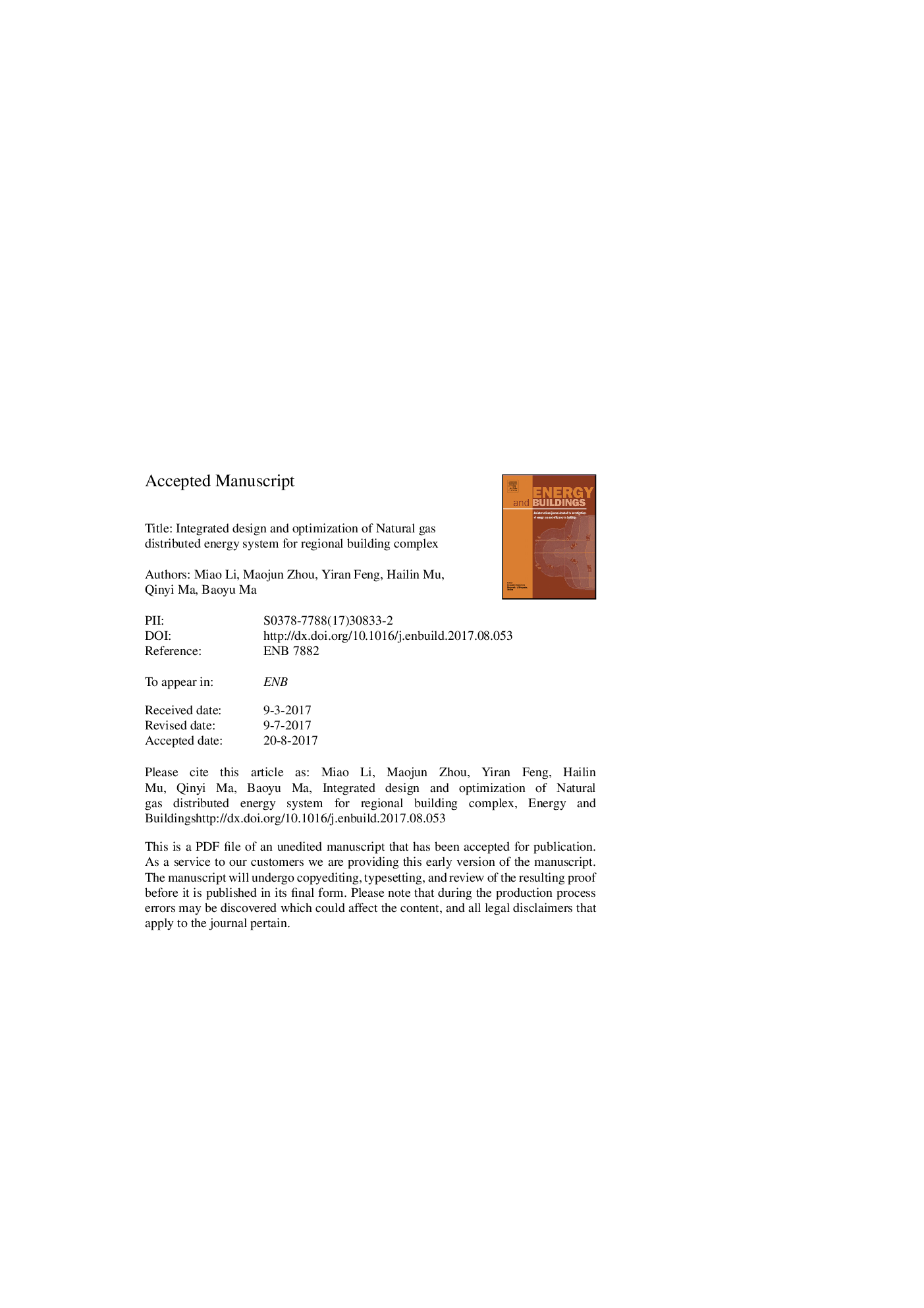| Article ID | Journal | Published Year | Pages | File Type |
|---|---|---|---|---|
| 4918748 | Energy and Buildings | 2017 | 41 Pages |
Abstract
This study focuses on the optimal design of CCHP (combined cooling, heating and power) systems which were constructed at mix-buildings region. A natural gas-fueled turbine was proposed as prime mover for this application. The correlations between prime mover capacity and mixed ratio (residential building proportion of total buildings) is demonstrated in the design process. Our main task is to provide general guidelines for obtaining a feasible range of mixed ratio through various optimization objective, rather than emphasized on a fixed value in previous paper. Meanwhile the changes of feasible range of mixed ratio which varied with optimal prime mover capacity were analyzed seriously. Results show that: Residential buildings combined with hotels can obtain better flexibility than that combined with offices. For a larger energy consumption reduction and annual total costs saving, the capacity of gas turbine should be selected as small-scale. However, the feasible ranges of the mixed ratio is optimized showing a trend of decline as the capacity of gas turbine increase gradually. In addition, the application of CCHP system in mix- buildings region results in better environmental performance than the energetic and economic ones, with 32.34% and 35.77% pollutant emissions reduction in two mix-buildings region.
Keywords
Related Topics
Physical Sciences and Engineering
Energy
Renewable Energy, Sustainability and the Environment
Authors
Miao Li, Maojun Zhou, Yiran Feng, Hailin Mu, Qinyi Ma, Baoyu Ma,
